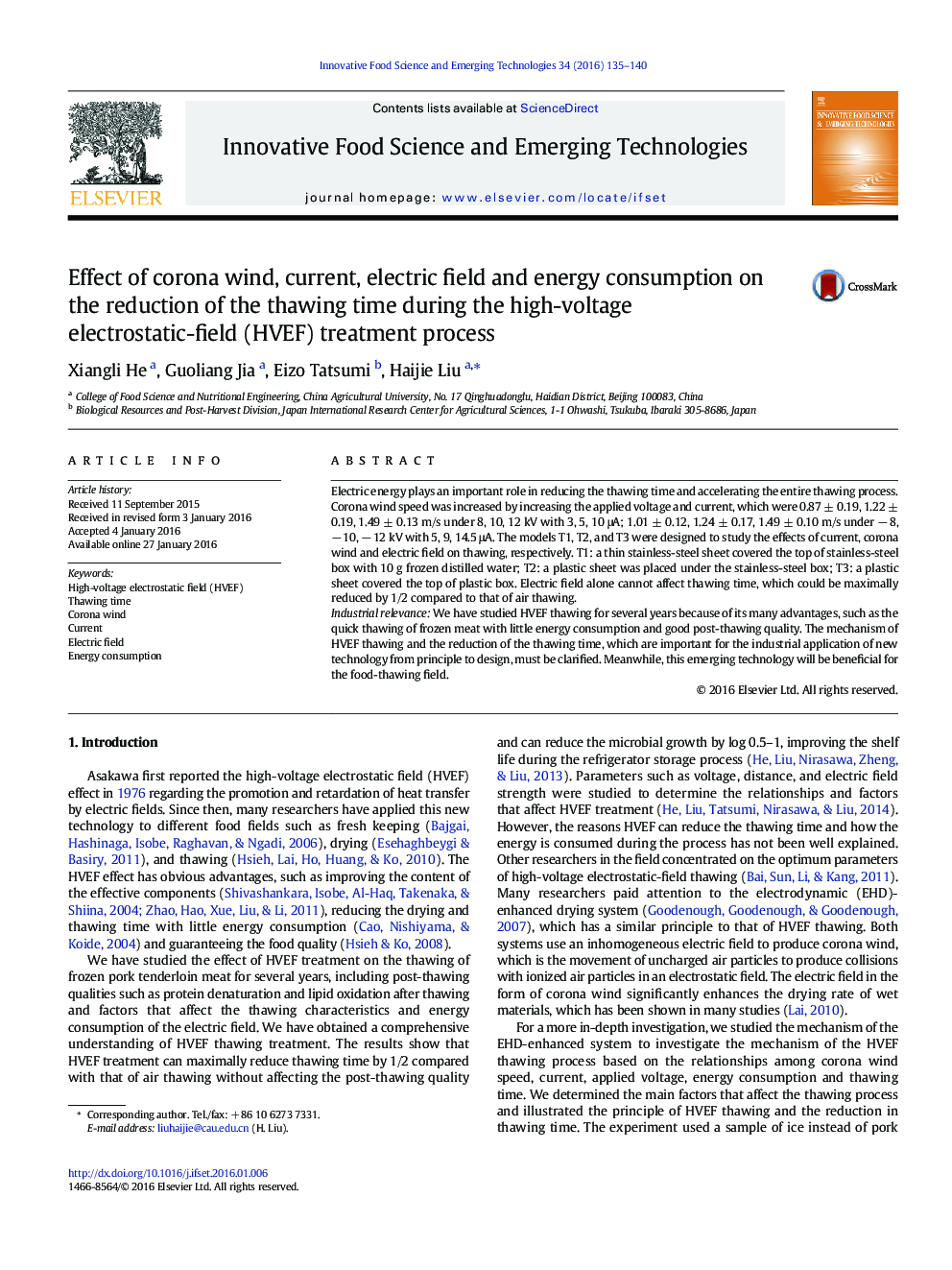| Article ID | Journal | Published Year | Pages | File Type |
|---|---|---|---|---|
| 2086363 | Innovative Food Science & Emerging Technologies | 2016 | 6 Pages |
•The energy provided by the electric field accelerates the entire thawing process.•The corona wind speed varies with time in a range at a given voltage.•A negative electric field has better stability than a positive electric field.•A high-voltage electric field has a limitation in reducing the thawing time.•An electric field alone does not reduce the thawing time.
Electric energy plays an important role in reducing the thawing time and accelerating the entire thawing process. Corona wind speed was increased by increasing the applied voltage and current, which were 0.87 ± 0.19, 1.22 ± 0.19, 1.49 ± 0.13 m/s under 8, 10, 12 kV with 3, 5, 10 μA; 1.01 ± 0.12, 1.24 ± 0.17, 1.49 ± 0.10 m/s under − 8, − 10, − 12 kV with 5, 9, 14.5 μA. The models T1, T2, and T3 were designed to study the effects of current, corona wind and electric field on thawing, respectively. T1: a thin stainless-steel sheet covered the top of stainless-steel box with 10 g frozen distilled water; T2: a plastic sheet was placed under the stainless-steel box; T3: a plastic sheet covered the top of plastic box. Electric field alone cannot affect thawing time, which could be maximally reduced by 1/2 compared to that of air thawing.Industrial relevanceWe have studied HVEF thawing for several years because of its many advantages, such as the quick thawing of frozen meat with little energy consumption and good post-thawing quality. The mechanism of HVEF thawing and the reduction of the thawing time, which are important for the industrial application of new technology from principle to design, must be clarified. Meanwhile, this emerging technology will be beneficial for the food-thawing field.
